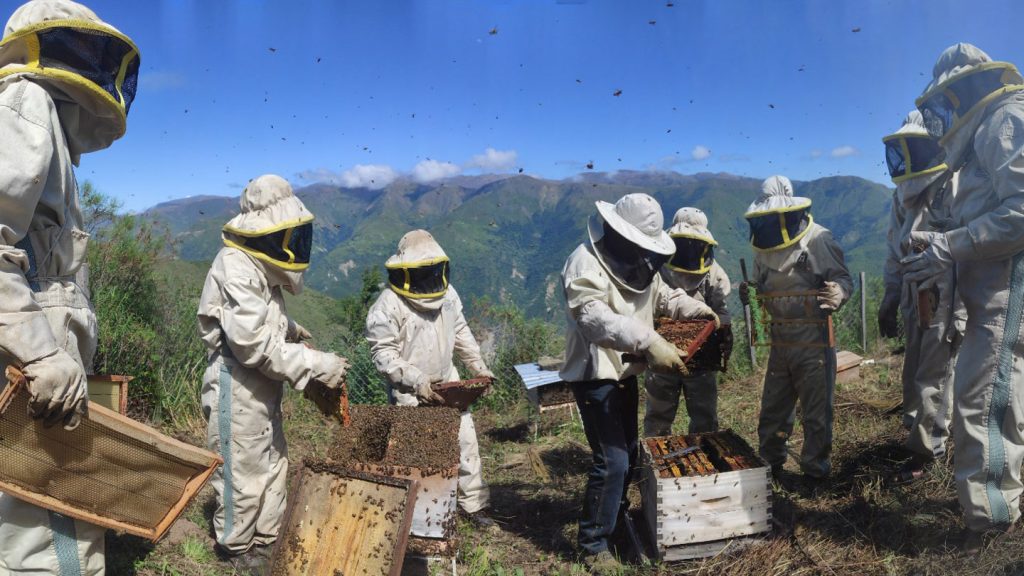In 1998, when she was 22 years old, conservation biologist Ximena Velez-Liendo encountered South America’s biggest meat-eating animal on her first day of field research in Bolivia. Her life changed forever when she turned around to see “this beautiful, amazing bear coming out of the forest,” Velez-Liendo says. “It was like love at first sight.” She thought at that moment: “If I can do anything for you, I’ll do it.”
Also called spectacled bears, Andean bears are easily recognized by the ring of pale fur that often encircles one or both eyes. Bolivia is home to about 3,000 adult bears, or roughly one-third of the world’s total Andean bears, whose range arcs through five countries along the western edge of South America. Listed as vulnerable by the International Union for Conservation of Nature, or IUCN, the species (Tremarctos ornatus) suffers mainly from habitat loss and conflicts with humans, who sometimes kill the bears in retaliation when bears raid crops or hunt livestock.
Although the bears can seem scary (adults weigh up to 200 kilograms), Velez-Liendo says they prefer to munch on plants instead of meat with their strong jaw muscles. Although Andean bears are part of the Carnivora group and are “absolutely capable” of hunting meat, they have, like many other bears, an omnivorous diet.
When Velez-Liendo first made a commitment to helping the bears, no one knew how many lived in her home country of Bolivia or where they wandered. She answered those questions by conducting a nationwide assessment that estimated the population and identified where the bears can find food, shelter, and water. Her analyses also pointed out Bolivia’s southern dry forests as the place where the bears face the biggest threats from humans. So she decided to put her data into action: Velez-Liendo started asking locals how she could help them protect this keystone species.
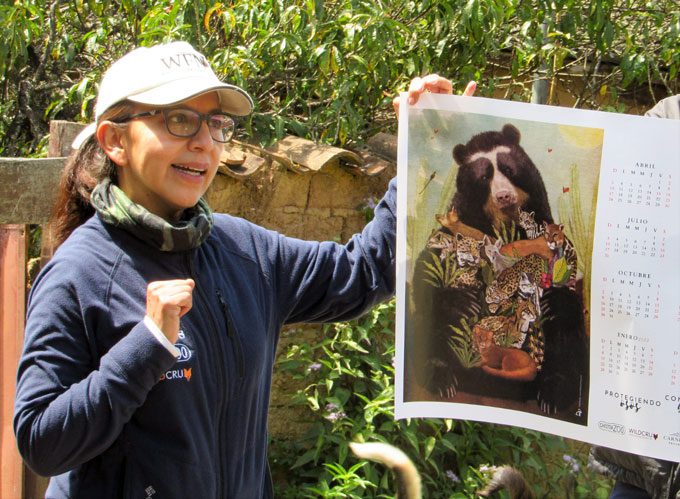
Velez-Liendo is a “renowned Andean bear expert” and an award-winning conservationist, says John Hechtel, president of the International Association for Bear Research and Management. She is a cochair of the Andean Bear Expert Team for the IUCN, a research associate at the University of Oxford’s Wildlife Conservation Research Unit, a conservation fellow at Chester Zoo in Cheshire, England, and director of the Andean Carnivore Conservation Program in Bolivia. In addition to her strong skills as a biologist and spatial analyst, Velez-Liendo also “genuinely cares about the well-being of the environment … and the local people” Hechtel says, which makes her “a really effective advocate for new, creative approaches to bear conservation.”
Thanks to Velez-Liendo’s work, Andean bears went from nearly extinct in the southernmost part of their range to healthy and recovering. Her population and habitat assessments now inform global, regional and local efforts to conserve Bolivia’s bear.
From gorillas to bears
Velez-Liendo always knew she wanted to work with animals. Her earliest memories are of playing in the lowland forests near her village in southeastern Bolivia as a child – 'in bare feet, just poking insects or crossing the river.' When her family moved to Oruro, a city in the highlands at just over 3,700 meters elevation, she took to chasing reptiles, continuing to foster her 'appreciation of nature,' she says. She planned to attend veterinary school until a friend introduced her to biology as a career path. While earning her undergraduate degree from Universidad Mayor de San Simón in Cochabamba, Velez-Liendo had her heart set on studying gorillas in Rwanda – until that fateful day she met her first bear in Carrasco National Park.
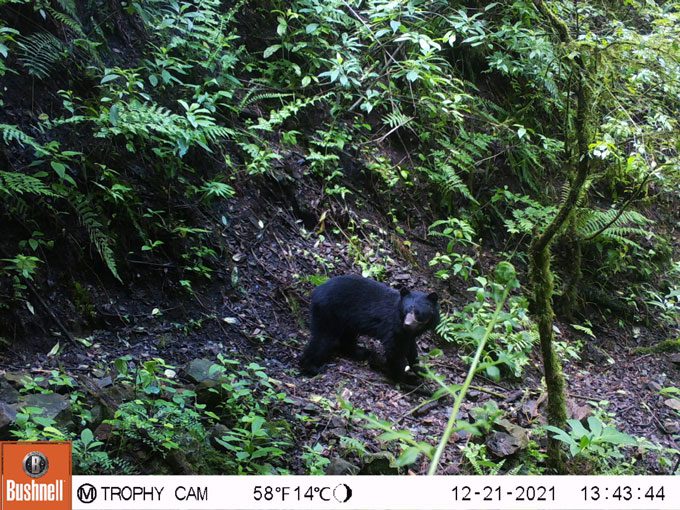
She decided to learn geographic analysis and mapping skills and, as part of her master’s research at the University of Leicester in England, she used these tools to analyze what was causing deforestation around Carrasco National Park. She linked habitat destruction in the region to a boom in coca cultivation following the closing of mines in the highlands along with the completion of a new road connecting the cities of Cochabamba and Santa Cruz.
Velez-Liendo then spent almost three years 'traveling the entire eastern slope of the Bolivian Andes' to produce the first – and still only – national assessment of Andean bears as part of her Ph.D. in biology at the University of Antwerp in Belgium. This meant knocking on doors in rural communities asking people if they had seen any bears, then verifying anecdotal evidence in the field. At each spot where a sighting was reported, she searched for bear signs, particularly looking for flowering plants that had been munched by the charismatic mammals. She then identified the best places to invest in protecting or restoring bear habitat by relying on habitat models, landscape connectivity analysis and human expansion models. A maximum population of 3,165 adult bears occupy 13 key chunks of habitat covering 21,113 square kilometers in Bolivia, according to two studies published by Velez-Liendo in Ursus in 2013 and 2014.
She zeroed in on the dry forested valleys of Tarija, a region in southern Bolivia that borders Argentina, as the best habitat for bears outside protected parks. Only 6 percent of the Andes’ original dry forest is left, scattered in a few patches in Ecuador, Peru and Bolivia. It’s home to monkeys, foxes, birds and a half-dozen wild cat species, along with the Andean bear. But the forests have been heavily used by people, says Velez-Liendo. The IUCN was considering listing the bears in Tarija as extinct.
In 2016, Velez-Liendo received a small grant from the Chester Zoo to set up camera traps to see if any bears were still in Tarija. At first 'the forest was just empty,' she says. Then in February 2017, a photo of a mother and cub sparked hope. The same day that photo was taken, Velez-Liendo found out she was short-listed for the Whitley Awards, prestigious prizes from the Whitley Fund for Nature that are known among conservationists as the 'Green Oscars.' She was one of seven 2017 award winners, which granted her 35,000 British pounds (around $27,000 in May 2017) for her project and provided conservation training. She considers this as her “golden ticket” to start the Andean Carnivore Conservation Program, focusing on helping people coexist with bears and other carnivores.
Aiding with honey
While Tarija’s forests seemed like good bear territory, they were also a hotspot for conflicts between people and bears. Local villagers exhibited bear skins in their living rooms, expressing how bears posed a threat to their livestock and crops. When another community in Tarija showed her a stack of brand-new bee boxes that people didn’t know how to use, she came up with the idea: Could selling honey help save bears?
Teaching farmers to be beekeepers was becoming popular in other parts of Bolivia as an environmentally friendly way to provide stable income for rural landowners who might otherwise resort to clearing more forest. In 2017, Velez-Liendo invited Patricia Sanchez, an economist with experience in teaching beekeeping in Bolivia’s highlands, to join the Andean Carnivore Conservation Program. The program covers 70 percent of the cost of new equipment and trains locals on how to care for hives, extract honey, and market it for sale. It also supports other nature-friendly agricultural practices, such as fencing livestock and pruning fruit trees so they don’t attract bears. In return, community members agree to protect the forest and not harm Andean bears. Velez-Liendo also trains locals on collecting data and helping monitor the ecosystem. More than 100 families were enrolled in the program in 2023.
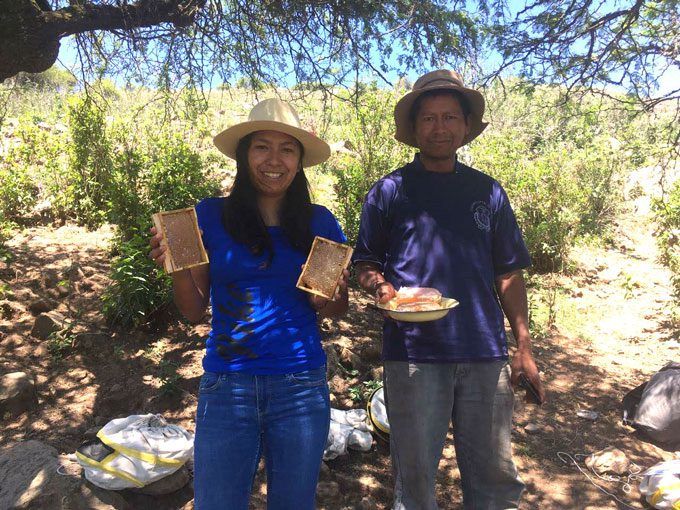
“If people don’t see the value of protecting an animal, protecting an ecosystem … then they’re not going to do it,” Velez-Liendo says.
The sale of Valle de Osos–branded honey locally provides beekeeping families with income. Sanchez, who visits each of the participating communities at least twice per month, notes that the beekeeping efforts are an economic development opportunity that can support young people who want to stay in their communities instead of leaving to find a job in the city.
Today, more than 60 Andean bears roam through Tarija’s forests, a notable increase from the five bears documented in 2017. By reducing the retaliatory killing of bears, “we managed to basically save this bear population from extinction,” Velez-Liendo says. Having more bears benefits the entire ecosystem in Tarija, as the bears spread seeds that help forests thrive.
Her aim is to replicate Tarija’s model in the Chuquisaca and Cochabamba regions to the north. Engaging more rural communities can provide “stepping stones” of habitat to connect isolated bear populations, she says.
A “bear-ologist” who collaborates with people
Velez-Liendo mentions that all the bear biologists she knows in Bolivia are women, which is noteworthy in a country where it’s uncommon to see a woman driving a car. She jests that pursuing Andean bears across Bolivia’s challenging terrain “is not for the faint of heart.” Her mentor at the start of her career and beyond was Susanna Paisley, the first biologist to put a radio collar on an Andean bear in the wild. Paisley, based in Canterbury, England, says that one of Velez-Liendo’s most impressive achievements is the trust she’s built among people in southern Bolivia’s agricultural communities. Healthy ecosystems are now linked with more economic security in that region, particularly in the face of persistent droughts and climate change.
Paisley says there are many challenges in this type of work in remote parts of Bolivia due to lack of infrastructure and prevalent male chauvinism, which requires determination to achieve results. She describes Velez-Liendo as a highly influential person with an experimental and collaborative approach, and emphasizes the need to be independent-minded.
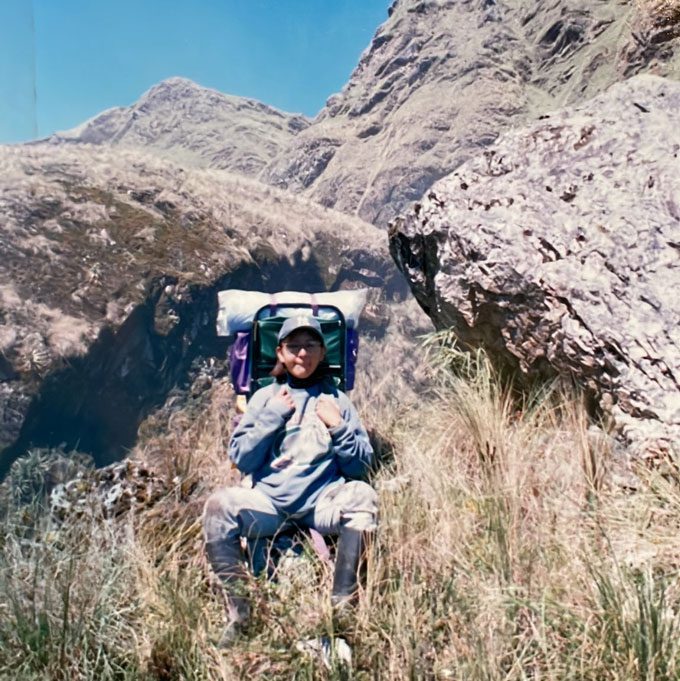
Velez-Liendo says one of her greatest personal difficulties was transitioning from being a bear researcher who wasn't very interested in working with people to realizing that people are the key to saving the animals she is passionate about. She believes that conservation efforts should be led by the communities living among the diverse wildlife, rather than just biologists. She thinks that conservation is evolving from the hands of biologists to the hands of the people.
The Andean Carnivore Conservation Program recently obtained a three-year grant from the Chester Zoo. With some relief from the pressure of fundraising, Velez-Liendo intends to concentrate on publishing findings from Tarija and plans to create an educational book to help a broader audience understand the bears. She emphasizes the many lessons bears can teach us, starting with taking life easy, avoiding conflict, and getting good rest.


